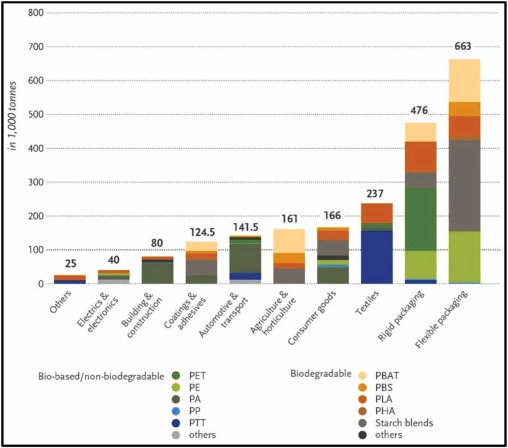Advancements in polymer science and engineering have helped the scientific community to shift its attention towards the use of environmentally benign materials for reducing the environmental impact of conventional synthetic plastics. Biopolymers are environmentally benign, chemically versatile, sustainable, biocompatible, biodegradable, inherently functional, and ecofriendly materials that exhibit tremendous potential for a wide range of applications including food, electronics, agriculture, textile, biomedical, and cosmetics. This review also inspires the researchers toward more consumption of biopolymer-based composite materials as an alternative to synthetic composite materials. Herein, an overview of the latest knowledge of different natural- and synthetic-based biodegradable polymers and their fiber-reinforced composites is presented. The review discusses different degradation mechanisms of biopolymer-based composites as well as their sustainability aspects. This review also elucidates current challenges, future opportunities, and emerging applications of biopolymeric sustainable composites in numerous engineering fields. Finally, this review proposes biopolymeric sustainable materials as a propitious solution to the contemporary environmental crisis (Arif et al., 2022).

Future challenges and opportunities
Despite the tremendous progress made in the field of biodegradable polymers, some areas of research still require further exploration for addressing challenges. Biopolymers are intriguing raw materials for promoting eco-friendliness, non-toxicity, and sustainability. There is a need to conduct focused research for improving the mechanical characteristics and biodegradation mechanisms of complex working environments. Additionally, biopolymers are beneficial for the ecological environment only if their degradation products are non-toxic. To date, no study has been found in the literature that evaluates the harmful and toxic impact upon the biodegradation of biopolymers (Arif et al., 2022).
Furthermore, several weaknesses in some biopolymers including poor processability and solubility in water or common organic solvents have been observed. These areas need to be explored to encourage the utilization of biopolymer materials. Biodegradable packaging for agricultural products also needs more attention in terms of gas barrier properties and water resistance. In biomedical areas, tissue biomimicry still remains a key challenge. Thus, more development and focus on 3D printing of biopolymers-based tissues or organs are required. This is because of some challenges related to material printability, the exact geometry of organs, functionality, and safety (biosafety and environmental safety) (Arif et al., 2022).
Personal note:
It is a tool better to understand the behavior of different materials with natural sources. It contains relevant information about the process and degradation time of biobased materials developed in specific applications. Additionally, it has a section on biocomposites and their respective degradation processes. The last section of the article focuses on showing the applications of materials such as tissue engineering, drug delivery, and electronic, medical, and miscellaneous applications.
Arif, Z. U., Khalid, M. Y., Sheikh, M. F., Zolfagharian, A., & Bodaghi, M. (2022). Biopolymeric sustainable materials and their emerging applications. Journal of Environmental Chemical Engineering, 10(4), 108159. https://doi.org/10.1016/j.jece.2022.108159




